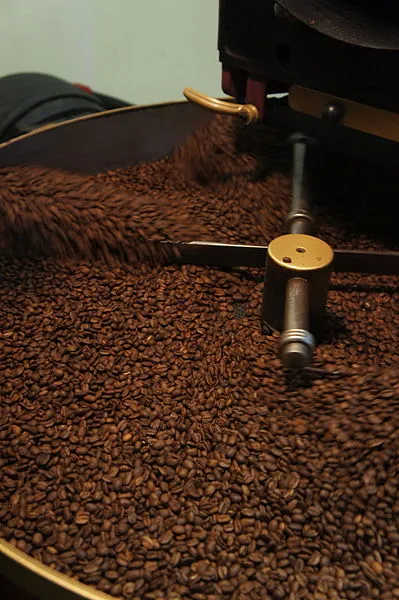
Where did instant coffee come from? How is soluble coffee made? And can instant even compete with traditionally prepared quality coffee?
Soluble coffee is older than you think...
Those who consider instant coffee to be a twentieth-century phenomenon will no doubt be surprised by its history. Let's briefly recall just a few of the major milestones:
-
The first mention of so-called instant coffee dates back to 1771 in Great Britain.
-
In 1853, the first American version of this coffee saw the light of day, tested during the Civil War, among other times.
-
The first sufficiently stable product came in 1901 from Sartori Kato, the Japanese man behind the instant tea method.
-
Five years later, British chemist G. C. Washington's process for making instant coffee, which would dominate the American market for thirty years.
-
In 1938, Nestlé produced its first Nescafé. At that time, carbohydrate ingredients were still being added to coffee powder.
-
It was not until the 1950s that pure soluble coffee was produced, i.e. without any additional additives.
How does the process of making soluble coffee work?
-
Extraction - roasted, ground coffee is processed using high pressure and hot water to produce a liquid extract, basically a very strong concentrated coffee.
-
Drying - by subjecting the coffee extract to high temperatures (around 250°C) or, conversely, to extreme cold (-40°C), it is dried and further processed to produce either granules or a loose, fine powder.
-
Aroma restoration - this processing process causes the coffee to lose its typical aroma, which is usually very appreciated by lovers of the resulting beverage. It is therefore desirable to add aroma to instant coffee.
-
Packaged - soluble coffee should not be exposed to moisture, so it is packaged in a protective atmosphere using various gases, which at the same time prevent the loss of flavour and aroma.
Thus, thanks to this brief description, you can clearly see that even instant coffee remains coffee, although its die-hard opponents often claim otherwise.
What are the basic differences between instant and traditionally prepared coffee?
Caffeine Content - 250 ml of instant coffee (prepared using 1 teaspoon of powder) contains roughly 30-90 mg of caffeine, the same amount of drip coffee will offer 70-140 mg of caffeine, in comparison one espresso contains around 200 mg.
Antioxidant Content - studies have shown that even instant coffee retains its valuable antioxidant content, and due to the processing process, even has more of certain health benefits than traditionally brewed coffee.
Acrylamide Content - Acrylamide is a potentially harmful substance produced during the roasting process. Instant coffee contains about twice as much of it as traditionally prepared coffee. However, you should know that this is by no means a dose that could endanger your health in any way.
Health benefits - in this respect, instant coffee offers the same benefits as traditional coffee, whether it's boosting brain function, speeding up metabolism, reducing the risk of depression or improving liver function.
Although for the true coffee connoisseur, the instant version cannot offer an adequate drinking experience, it still represents a quick and easy way to a cup of your favorite beverage when you don't have a coffee maker or other tools necessary for traditional coffee preparation.
Lavado coffee from the mountains of south-eastern Cuba will surprise you almost zero acidity and a distinctive taste of dark chocolate and caramel.
Lavado coffee from the mountains of south-eastern Cuba will surprise you almost zero acidity and a distinctive taste of dark chocolate and caramel.
Guatemalan Trés Maria coffee stands out for its perfect balance and pleasant sweetness complemented by the taste of ripe tropical fruits.
Guatemalan Trés Maria coffee stands out for its perfect balance and pleasant sweetness complemented by the taste of ripe tropical fruits.
Exceptionally low acidity and chocolate flavour come together in Brazil Fazenda Rainforest coffee, which you can buy to support the idea of an ecological and socially friendly way of growing coffee.
Exceptionally low acidity and chocolate flavour come together in Brazil Fazenda Rainforest coffee, which you can buy to support the idea of an ecological and socially friendly way of growing coffee.
Ethiopia gave its name to coffee after the Ethiopian province of Kaffa, so it's no surprise that some of the best coffee in the world is grown there.
Ethiopia gave its name to coffee after the Ethiopian province of Kaffa, so it's no surprise that some of the best coffee in the world is grown there.
A unique blend of 5 varieties of Arabicas from Central and South America , complemented by a quality robusta for an espresso full of flavour, strength and quality creams.
A unique blend of 5 varieties of Arabicas from Central and South America , complemented by a quality robusta for an espresso full of flavour, strength and quality creams.
Cuba Lavado, arabica coffee beans
Guatemala Trés Maria, arabica coffee beans
Brazil Fazenda Rainforest, Arabica coffee beans
Ethiopia Sidamo, Arabica coffee beans
Espresso blend Pura Vida, coffee beans
Sources:
http://www.madehow.com/Volume-3/Instant-Coffee.html
https://pubmed.ncbi.nlm.nih.gov/23442632/
https://www.efsa.europa.eu/en/efsajournal/pub/4104
https://onlinelibrary.wiley.com/doi/full/10.1111/j.1467-3010.2007.00665.x




























































































